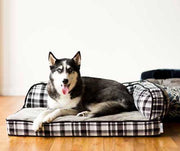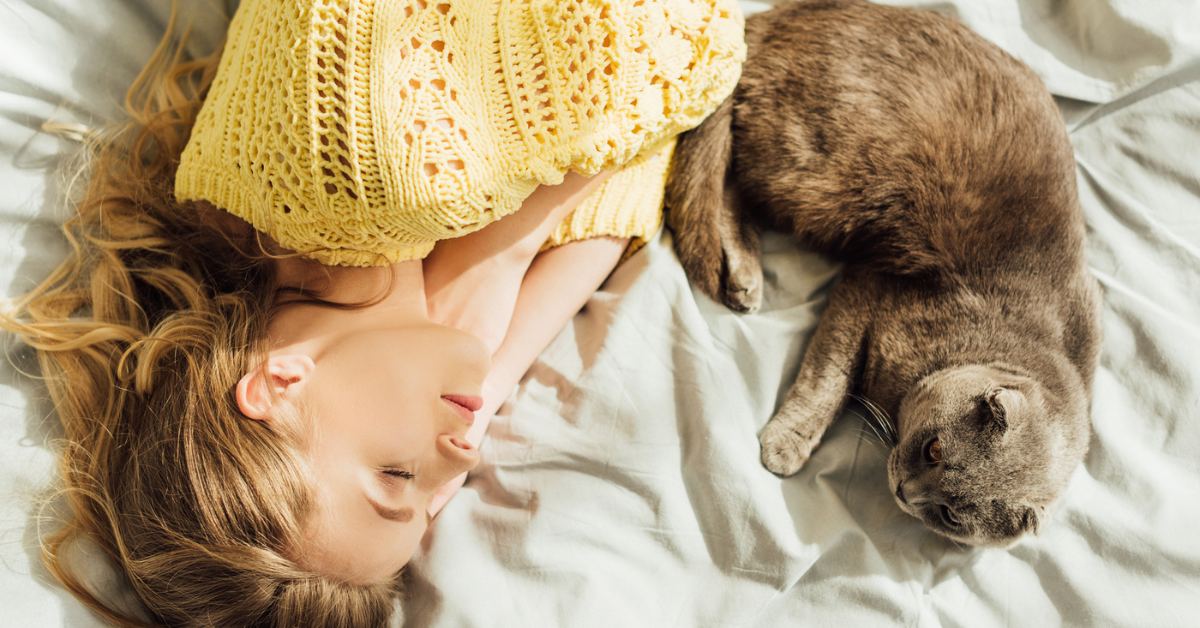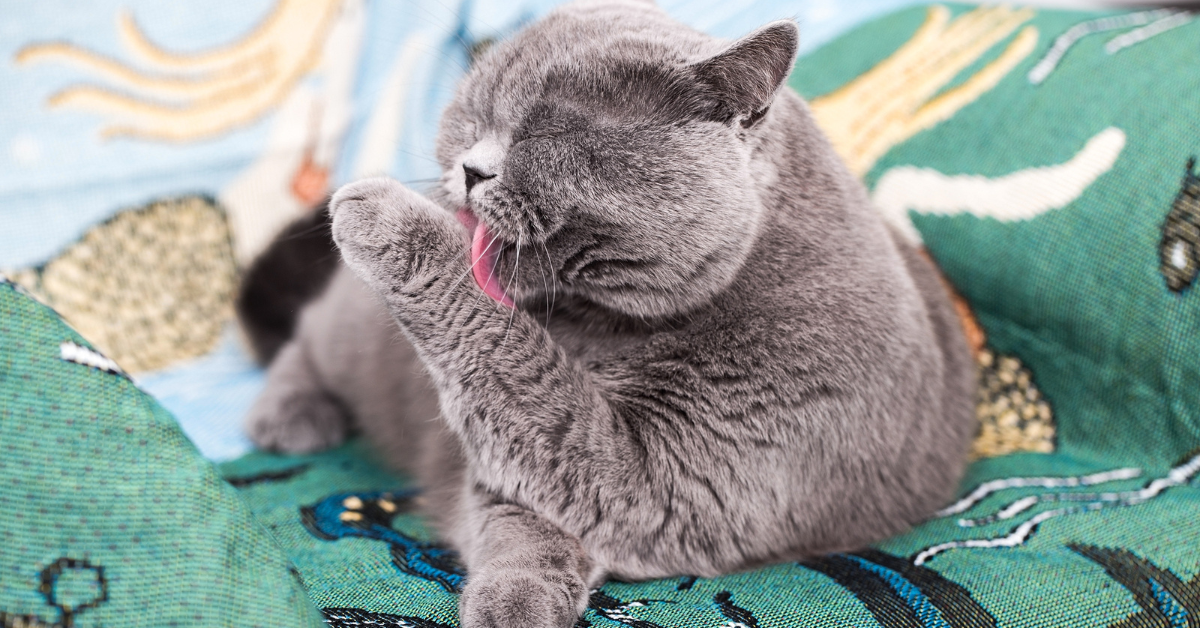How to Pick the Right Leash for Your Puppy

Curious about which leash is best for your new furry friend? Picking a dog leash for the first time can often be overwhelming. The size, length, and design will often vary depending on the dog's personality. We know this is supposed to be about dog leashes, but first we need to talk about what you're going to attach your dog's leash to.
HARNESS OR COLLAR?
When you get a new puppy, you'll need to train him on how to walk on a leash. A dog collar is generally not a good idea to use until your puppy is leash-trained and knows how to walk on a leash. Some puppies get nervous or even scared on their first few walks; the big world around them can be quite intimidating. This could lead to them pulling backward and slipping out of their collar, or if they pull too hard, the collar could restrict their airflow or even choke them! Using a harness until your pup is leash-trained will prevent these issues and give you more control over your puppy as they learns to walk on a leash. When your walk is over, take the harness off your puppy, as it could lead to discomfort if left on all day. Harnesses are meant to be used only for walks. As your puppy grows, he will come to learn that when you pull out the harness, it's time for a walk! No matter how big your puppy is going to grow, our variety of adjustable harnesses adjust to your dog's size as they grow and will last well into their puppyhood.
A collar, on the other hand, is still a very good use of identity. However, a collar is useless unless it has tags. Dog tags usually include your puppy's name, the owner's name, and phone number. That way, if the worst happens and your puppy gets free, the person who finds them will know your puppy's name and how to get ahold of you. Pet retail stores like Petco or PetSmart usually have machines inside their stores where you can get your dog's tag made and are pretty inexpensive.
I HAVE A COLLAR/HARNESS, NOW WHAT?
Once you decide how you want to deck out your new puppy, you need a leash so you can walk him. Here's a general rule when picking out a leash, the bigger the dog the thicker the leash. The smaller the dog the thinner the leash. After you determine if your dog needs a thick or thin leash the next step is to pick out the style.
MY PUPPY HAS NO IDEA HOW TO WALK ON A LEASH
If you are training your puppy and starting from scratch, you will most definitely want to get a short leash that is also referred to as a lead. If your puppy is small and you are also treat-training him, you might want something like the Petmate Pocket Leash (pictured left). This leash is designed to hold doggy bags, keys, and treats. It is the ultimate puppy purse and will hold everything you need when you are on a walk.
you will most definitely want to get a short leash that is also referred to as a lead. If your puppy is small and you are also treat-training him, you might want something like the Petmate Pocket Leash (pictured left). This leash is designed to hold doggy bags, keys, and treats. It is the ultimate puppy purse and will hold everything you need when you are on a walk.
If you have a large puppy and need a little more power with your pull, you might want to try something similar to the Aspen Pet Cotton Dog Leash (pictured right). This leash has braided paracord and is a very thick leash. This will help anchor you while you train your strong fur baby. If your dog just will not stop pulling you might want to find a leash that stretches. That way, when your puppy pulls, it will lengthen the leash and then compress back down to its normal length when you stop him from pulling. This will help protect your joints from a bolting dog on a leash.
to try something similar to the Aspen Pet Cotton Dog Leash (pictured right). This leash has braided paracord and is a very thick leash. This will help anchor you while you train your strong fur baby. If your dog just will not stop pulling you might want to find a leash that stretches. That way, when your puppy pulls, it will lengthen the leash and then compress back down to its normal length when you stop him from pulling. This will help protect your joints from a bolting dog on a leash.
WALKING IS AN OLD DOGS GAME
If your dog is already leash trained and isn't pulling or dragging you, they could benefit from a retractable leash. If you want your dog to have a full day of exploration, you can get a Petmate Walkabout Retractable Leash (pictured right) to give your pet plenty of roaming room. Retractable  leashes do not teach dogs how to stay close to their owner and walk on a leash properly. They are meant for exploration and roaming time. Trained dogs can be trusted on this kind of leash. Dogs that are new to going on walks or are not fully trained yet should not be on a retractable leash. Instead, use a standard leash with a looped handle to train your dog to walk on a leash.
leashes do not teach dogs how to stay close to their owner and walk on a leash properly. They are meant for exploration and roaming time. Trained dogs can be trusted on this kind of leash. Dogs that are new to going on walks or are not fully trained yet should not be on a retractable leash. Instead, use a standard leash with a looped handle to train your dog to walk on a leash.
WALKING IN THE DARK?
Do you find yourself taking walks early morning or late at night when it's dark outside? Are you often worried about not being seen by passing motorists? One of the safest options for a nighttime walker is a glow-in-the-dark dog leash. That way when cars drive by, they can see you and steer clear. The Aspen Pet Glow in the Dark Leash (pictured below) would be a great addition to your dog's wardrobe to ensure both owner and pet are safe.

TIME TO LEASH TRAIN!
Now that you have all the tools you need for a safe and instructive walk, get out there! Let your puppy smell the flowers and get used to all the new smells, noises, and sights. If you need tips on how to leash train your puppy, you can read more about that here. No matter what leash you decide on, you and your puppy will enjoy the memories and bonds built on your walks together.
Previous article

Next article

Related posts
View all-

5 Simple Tips to Make Sure Your Cat Drinks Enough Water
Ensuring your cat stays hydrated is important, but it can be challenging since many cats don't drink enough water. Dehydration can lead to kidney disease and other health issues. Fortunately, you can encourage your cat to drink more with a few simple changes. Read Article -

How to Keep Your Cat Busy at Night (So You Can Sleep)
For many cat owners, the quest for a good night's sleep while keeping their feline friends content and engaged can seem like a never-ending battle. Cats, naturally more active at night or early in the morning, often disrupt your sleep schedules with nocturnal activity, whether through playful nature or seeking attention. Read Article -

Should You Bathe Your Cat? Everything You Need to Know About Cat Hygiene
When it comes to cat hygiene, a common question among cat owners is, "Should you bathe your cat?" Understanding how to care for felines, especially bathing cats properly, is crucial for maintaining their overall health. Most cats are fastidious groomers, but specific scenarios like long-haired cats getting dirty or skin irritations, might require a bath.
Read Article



